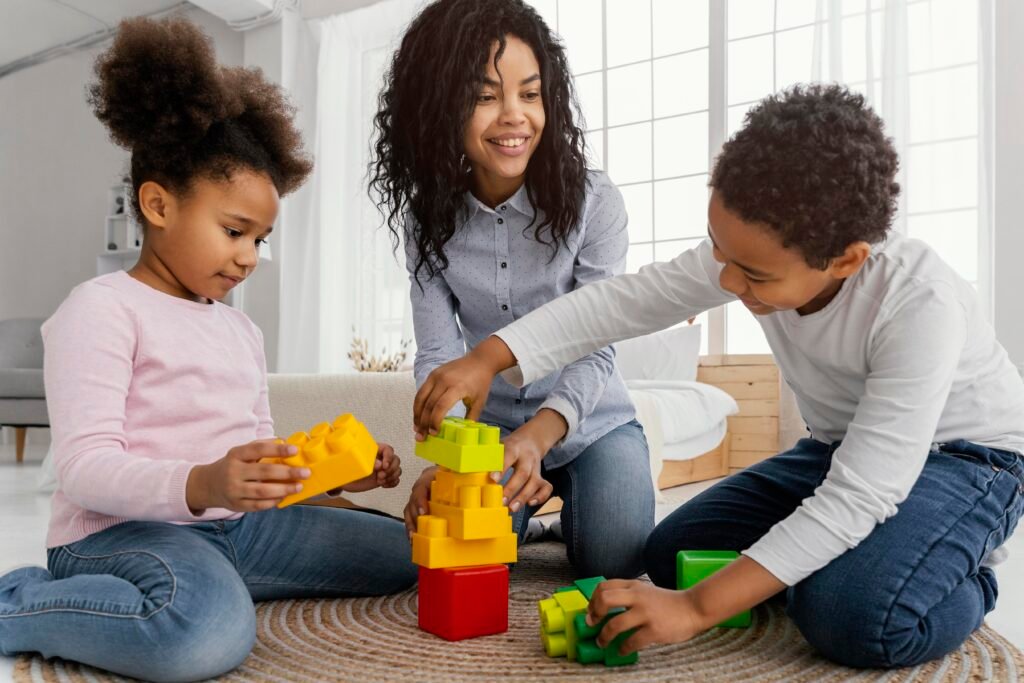As kids grow older, there comes a time when their interest in toys begins to wane. From the earliest rattles and plush animals to intricate building sets and action figures, toys play a significant role in a child’s development this transition can leave many parents wondering: when do kids stop playing with toys? Children develop at different rates, and their interests evolve as they explore new hobbies, social activities, and ways of engaging with the world. However, there are some general patterns that most children follow, and understanding these can help you support your child as they move from the world of toys to new forms of play and learning.
Toys as Essential Tools for Growth
In the early years of a child’s life, toys are more than just objects of play; they are essential tools for growth and development. From infancy through the toddler years, toys help children learn about their environment, develop motor skills, and begin to understand cause and effect. Simple toys like stacking blocks, puzzles, and dolls encourage creativity, problem-solving, and social interaction.
During these formative years, children are highly engaged with toys. They use them to explore the world, express their emotions, and interact with others. Growing older, their play becomes more sophisticated, moving from solitary play to more complex, imaginative scenarios involving multiple characters and narratives.
The Transition Phase: School-Age Children
As children reach school age, usually around 5 to 7 years old, their relationship with toys changes. While they still enjoy playing with toys, they also develop other interests, such as reading, sports, video games, and social activities. At this stage, the type of toys they enjoy often shifts from simple, imaginative playthings to more structured, goal-oriented toys like board games, construction sets, or educational kits.
During this phase, kids may still hold onto their favorite toys from earlier years, but you’ll likely notice how they start spending less time with them. Instead, they may become more interested in hobbies and activities that don’t involve traditional toys. This doesn’t mean they’ve outgrown toys entirely, but rather that their play is evolving to include new experiences and challenges.
The Tween Years: Shifting Interests
Around the age of 9 to 12, children enter the tween years, a period marked by significant physical, emotional, and cognitive changes. This time, many kids distance themselves from the toys they once cherished. Social interactions become increasingly important, and they may feel that playing with toys is something for “little kids.”
Peer influence in the teen years plays a significant role in shaping interests. If a child’s friends have moved on from playing with toys, they may be inclined to do the same, even if they still enjoy them privately. This is also when children develop more specific hobbies and interests, such as collecting items, engaging in sports, or becoming engrossed in technology and video games.
Moving Beyond Toys
By the time children reach their teenage years, typically around 13 or 14, their interest in toys has often faded significantly. At this stage, teens focus on socializing, exploring their identities, and pursuing interests that align with their emerging sense of self. Technology, fashion, music, and sports often precede playing with toys.
However, it’s important to note that “playing” doesn’t disappear entirely, it simply transforms. Many teens still enjoy activities that involve creativity and imagination, such as video games, model-building, or even collecting action figures or other items related to their favorite movies, books, or shows. These interests may not involve the same types of toys they played with as children, but they are extensions of the play that has been a part of their lives from the beginning.
Encouraging New Forms of Play
As kids move away from traditional toys, it’s a great opportunity to encourage new forms of play and learning. Activities promoting creativity, problem-solving, and critical thinking are valuable as they olderly grow. Here are a few ways to support your child’s development during this transition:
- Hobbies and Crafts: Introduce your child to hobbies like drawing, painting, model-building, or crafting. These activities allow them to express their creativity and develop fine motor skills in a new way.
- STEM Kits: Science, technology, engineering, and math (STEM) kits can be a great way to engage older children in hands-on learning. These kits often involve building, experimenting, and problem-solving, which can appeal to kids who have outgrown traditional toys.
- Outdoor Activities: Sports, hiking, and other outdoor activities are fantastic ways for kids to stay active and engaged. These activities also promote teamwork, discipline, and a sense of adventure.
- Technology and Games: Many older kids and teens enjoy video games, coding, or other tech-related activities. These interests can be highly educational and offer opportunities for developing problem-solving skills, strategy, and collaboration.
So, when do kids stop playing with toys? The answer is different for every child. While there’s a general progression from toy-centered play to more complex hobbies and interests, the timeline varies widely. What’s most important is to embrace and support your child’s journey, whether they’re still attached to their favorite toys or eager to explore new activities.
As your child grows and their interests evolve, encourage their curiosity, creativity, and love of play—whatever form that play may take. By doing so, you’ll help them develop the skills and passions that will carry them through life, long after they’ve outgrown their childhood toys.









